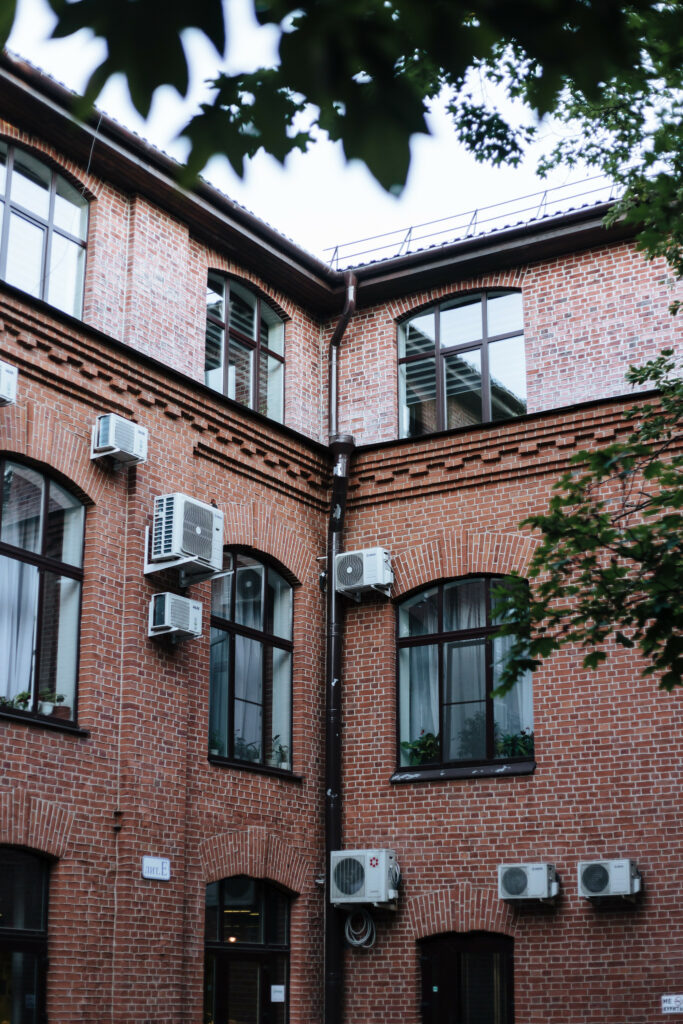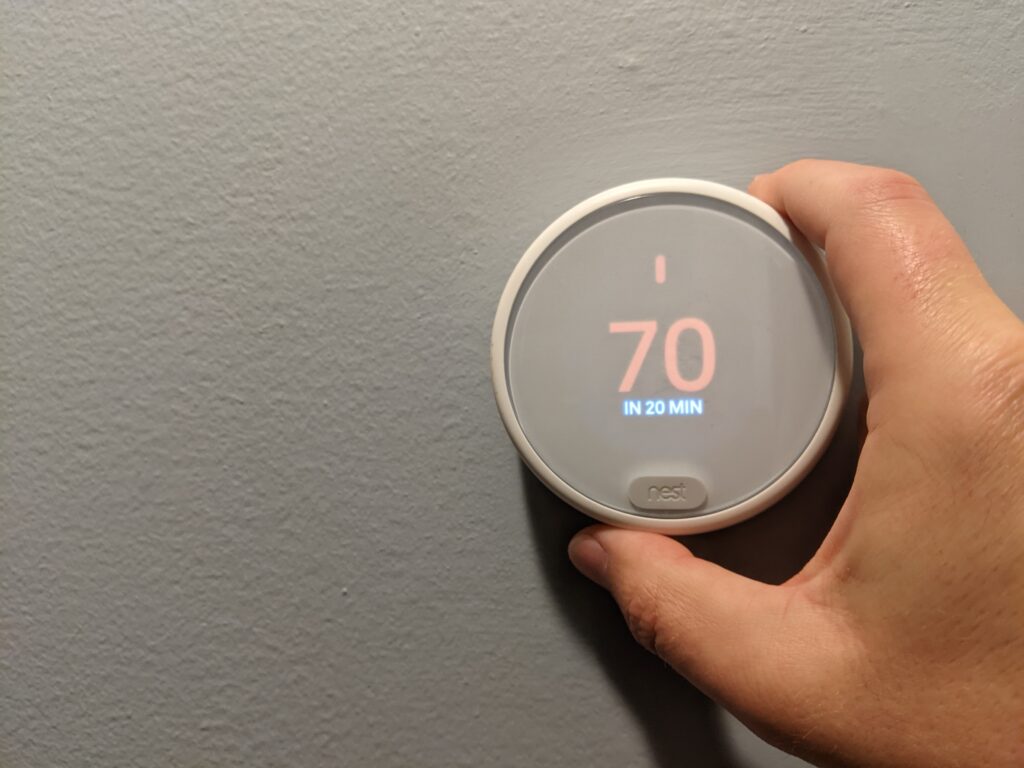A thermostat is the device that tells the rest of your HVAC system when to operate. It’s the interface in which the homeowner can set the temperatures for heating and air conditioning.
Thermostat Basics
Thermostats come in lots of shapes and sizes, but they all operate with the same basic principles. Each one has an internal thermometer. The homeowner sets two temperatures, one for heating and one for air conditioning. When the internal thermometer reaches either of those set temperatures, the thermostat tells the HVAC system to turn on.
For example, the homeowner sets the air conditioning threshold to 74-degrees. When the thermometer inside the thermostat reaches 74-degrees, it tells the air conditioning to turn on. Once the air conditioning has cooled the home enough, the thermostat tells the HVAC system to stop cooling.
The reverse is true for heating. The homeowner sets a low threshold. When the ambient temperature drops below that threshold, the thermostat signals the heat to turn on.
Many Types of Thermostats
The interface is the biggest difference between thermostats. You can typically swap them out without having to change the whole HVAC system. If you’re looking for a new thermostat, either make sure it’s compatible with your HVAC brand or is marked as “universal.”
The most basic of them have analog sliders to set the temperature thresholds. Digital versions add features like threshold ranges, scheduling, and even wifi to control your thermostat from your smart phone. The more premium features of smart thermostats can also increase the value of your home!
Dual Zone
If you have two (or more) thermostats, that means your home is “dual zone.” Each one will control a different HVAC system for different parts of your home – typically upstairs and downstairs. This is more energy efficient since each system only operates when its thermostat triggers. So you’re not heating both zones when only one of them needs it.
Instead of separate HVAC systems for each thermostat, some homes have air dampeners inside the ducts. These automatically open and shut to direct air flow to the area of the home that needs heating or cooling. You’ll still see separate thermostats, but only have one HVAC system for the whole home.
Regardless of the type of thermostat you have, they all operate on the same idea and are simply a way to control your heating and air conditioning.







Leave a Reply